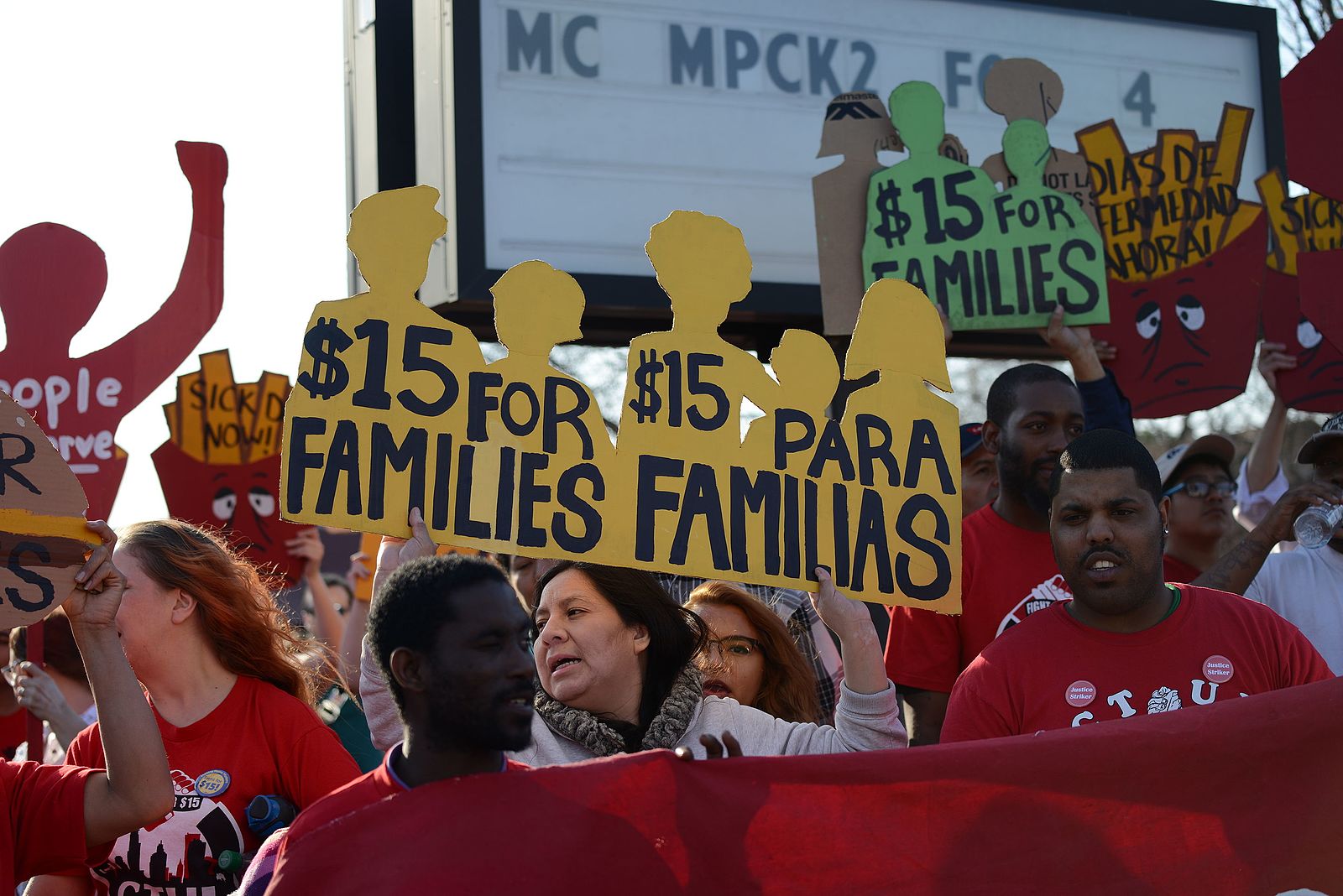The decline in fortunes of left-wing parties across Europe has partly been due to a loss of support among the traditional working-class communities. The SDP in Germany and Labour in the UK, among others, have become culturally detached from many of these voters relying instead on younger voters especially graduates.
One prescribed solution is a broad electoral strategy that utilises the wider labour movement, especially the trade union movement, to win back these votes. This would include bringing in more MPs from union backgrounds alongside using the combined labour movement to boost membership of the trade unions which in turn would help left-wing parties on election day.
There is strong evidence that this could have a positive impact on the electoral fortunes of left-wing parties. A study by the University of Reading compared the voting patterns of unionised and non-unionised workers in 16 European nations and concluded that unionised workers are less likely to support centre-right parties, and even less likely to support radical right-wing parties than their non-unionised colleagues.
However, the issue with this plan is the union movement remains in decline and is suffering from the same demographic trends as the political parties it helped birth. Data from the UK reveals striking demographic similarities between the membership of unions and The Labour Party’s electoral support.
Unions, like Labour, are becoming increasingly reliant on middle-income workers, especially those in the public sector, with University degrees.
29% of graduates are unionised in comparison to just 15.5% of workers who have no qualifications. Equally, unionised employees are most likely to be on middle incomes with only 13% of employees on less than £250 being unionised, in contrast to 30% of employees earning between £500 and £1000. Proponents might argue unions are a factor in higher wages of its members but the unionisation rate among low paid workers remains too low.
Worse still, while the Labour Party has enthusiastic youth support, winning 18-24yrs by 35pts in the 2019 General Election, union membership in the UK and nearly every country across Europe is ‘greying’.
The average age of the membership continues to trend upwards as unions seem unable to recruit a fresh batch of young workers. In 1995, less than 25% of unionised workers were over 50, today nearly 50% are in their 6th decade.
Unions are now in the perplexing position of representing those with well paying, secure jobs rather than workers in the most precarious, low paying jobs.
Trade Unions now face a demographic battle on two fronts. The solution should be to bring in a new generation of working-class, young workers to cure their demographic issues in one swoop.
Millennials face a declining quality of jobs, despite their high skills, alongside a staggering generational wealth gap yet they seem unwilling to ally themselves with unions to improve their economic situation.
Fortunately, hostility towards unions isn’t what is stopping Millennials from joining. In the UK, 58% of young respondents stated that they would join a union if one was present in their workplace, even young Republicans in the USA view unions in a positive light.
Further optimism can be obtained from a survey by EPSU that investigated attitudes towards unions among young workers. The leading reason given by non-members was “that they had not been asked to join” with only 16% of non-unionised workers believing they did not need union membership.
These findings replicate other research that shows diminishing exposure of unions within the workplace is a major factor in the declining unionisation rate among the young.
One way to counter this is by embedding unions within the school to work transition. In Belgium and the Nordic countries, this has led to higher than average unionisation rates among the young by making them aware of unions and allowing them to measure whether they think union membership is a worthwhile transaction before they enter the workplace.
Unsurprisingly unions with more political influence have an easier time recruiting younger members, thanks to a strong presence within workplaces and by offering material benefits via collective bargaining. Therefore, while the repealing of anti-union legislation that has hindered unions in countries like the UK can help, unions should not sit and wait for these regulatory changes that may never come.
Unions need to be acting now to engage and recruit more young members. A notable campaign to attract young members is the Dutch “Young & United”, set up by the Dutch Federation of Trade Unions), together with a diverse range of youth organizations, the campaign aimed to reach a dispersed young workforce and shine a light on age discrimination.
The campaign achieved the partial abolishment of the Dutch youth minimum wage and attempted to form a collective identity based around this issue while allowing youth-led direct activism from the bottom up. The federation also effectively utilised social media, recognising its unique value in carrying political messages to younger workers.
One reason, young people remain hard to recruit is because they are more likely to be employed in workplaces and economic sectors that rely on self-employment or flexible or temporary work.
Again the Netherlands may offer a guiding light. Holland’s FNV Zelfstandigen has been successful in attracting self-employed workers, that are generally tricky to unionise and their methods should teach lessons to other unions about recruiting workers from the ‘gig economy’.
FNV Zelfstangdigen achieved this without collective bargaining arrangements, instead offering additional services such as legal advice, discounts for insurance and debt collection services for their members.
The lesson here is understanding the needs and desires of the workforce. Union benefits don’t always have to be a larger paycheck or greater job security.
The need to offer a diverse set of benefits could provide an opportunity for cooperation between the union and co-operative movements. Mutually beneficial relationships could be established between large co-operatives and unions with union members gaining discounts or other benefits at co-operative enterprises which could help them grow their customer base.
Trade Unions should be working to survey and understand what young workers want, listening to and acting on their suggestions to recruit young new members. The solution to this problem is still somewhat of an unknown but to sustainably grow the trade union movement it’s an issue that needs solving.




